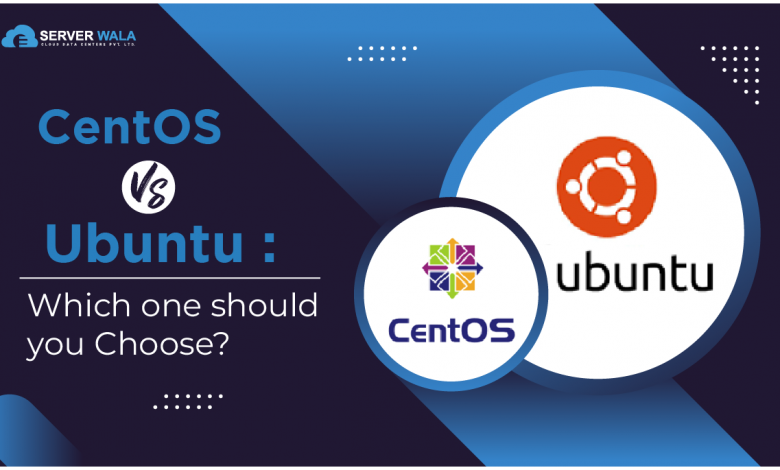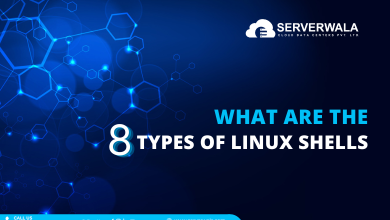CentOS vs Ubuntu: Which one Should you Choose?

Open-source operating systems such as Linux are used for most of the Internet. Linux is available in many versions. CentOS and Ubuntu are the most popular versions of web servers. Open-source communities support these operating systems.
Do you need help deciding between CentOS and Ubuntu? In this article, we examine the strengths and weaknesses of two major Linux distributions so that you can determine the best solution based on their strengths and weaknesses.
Do you know what CentOS is?
Linux distributions are free and open-source, such as CentOS (Community Enterprise Operating System). Red Hat Enterprise Linux first released this community-built software project in 2004. Based on the source code of RHEL version 2.1AS, the first release was forked from it. It provided a free and open platform for enterprise computing. CentOS will release a new version after each further RHEL distribution as a downstream community project.
A year from now. CentOS 8 will be the last downstream release from Red Hat, and CentOS Stream will succeed. CentOS 8 and CentOS stream both provide more details about this transition.
CentOS is highly customizable and secure, making it a top choice for hosting and cloud providers. In keeping with tradition, the operating system was highly tested and stable. This operating system also gained popularity for its corporate-level security updates and previously mentioned features in 2010. Since Debian introduced its new appealing features in 2012, its popularity dipped slightly.
Are you familiar with the Ubuntu Operating System or Server?
Based on Debian, Ubuntu is a Linux distribution. A single version was available in 2004, but it was only distributed among proprietary editions and unsupported communities. In 1998, Mark Shuttleworth founded Canonical and gathered small Debian developers to create an easy-to-use Linux desktop. Therefore, they developed Ubuntu – an easy-to-use solution for everyday users.
It (Desktop, Server, and Core) run on standalone or virtual machines and are all available in three editions.
Additionally, we offer pre-installed software, a user-friendly GUI, drive encryption, and excellent customer service. Because of its features and support, it has become the most popular workstation platform for Linux. Many computers (including Dell, HP, Lenovo, and Asus) come preinstalled with it, and it’s a popular choice for running web servers (part of the LAMP stack).
CentOS vs. Ubuntu: Comparison
We will compare CentOS Linux with Ubuntu for this blog. The differences are as follows:
Support Comparison
You can purchase support contracts for Ubuntu since Canonical backs it. Third parties, such as OpenLogic, support CentOS, but there is no official backing. Neither distribution is for sale. Customers can purchase support separately.
Server Comparison
There are many servers on the Internet running CentOS Linux. Amazon’s Linux distributions (Amazon Linux 1 and 2) are based on CentOS/RHEL and serve as the foundation for its cloud offerings. Users are more likely to use Ubuntu on their desktops.
Security Comparison
Every major version of CentOS Linux receives a security and bug fix update. Support for significant versions is provided for ten years, beginning with the release date (according to the RHEL schedule). Every release is thoroughly tested.
Every six months, Ubuntu is updated. Versions are supported for five years. Thus, software tends to have less stability because it is recent and has newer software.
System Comparison CentOS vs Ubuntu
Ubuntu and CentOS are Linux distributions, which means much of their core is the same. However, the management tools differ between the two distributions.
The same tools manipulate network interfaces, like IP or ifconfig. To facilitate managing those interfaces, both distributions have developed helper programs. Each distribution has its own set of tools. Thus, some knowledge specific to distribution cannot easily be transferred between the two.
Packaging Comparison
CentOS Linux uses RPM packages. RPM is a package management program. In addition to managing network repositories, dependencies, and other combinations of actions, yum was created as a front-end tool.
Ubuntu uses DEB packages. Managing DEB packages uses a program called apt (built on top of apt-cache, apt-get, and dpkg), similar to how yum/DNF is built on top of rpm.
Both tools can manage interactions between packages, allowing you to use a single device for the most common tasks. The underlying programs are rarely required to handle containers.
Also Read: How to Partition Disk in Linux or Format Disk in Ubuntu OS?
CentOS: Key Features and Uses
1. Desktop background
2. Networking in the business world
3. Information Technology Management
4. Servers, databases, and languages
5. Digitalization
6. Installation and creation of images
7. Security information
8. OS and kernel
9. CPU architectures supported
10. Support services for infrastructure
Why CentOS?
What are the benefits of CentOS? Linux operating systems like CentOS are stable, predictable, secure, and accessible. It is one of the most popular and most durable operating systems. These reasons will give you reasons for using CentOS on your server, containers, and perhaps even on your desktop.
Stability
One of the first things that comes to mind when talking about CentOS is stability. This does not happen by accident. Security fixes, new versions, and updates are tested extensively by manual and automated means. Stable software is therefore ensured on your server.
10-year support
CentOS has been supported for ten years. This is great for enterprise users. Furthermore, they include stable ABIs, making sure that packages developed today will be able to run for a decade from now.
Various software options
CentOS also has a very robust software repository. There are three primary repositories where CentOS’s major software packages are located.
- base
- updates
- Addons
Ubuntu: Key Features and Uses
Some of Ubuntu’s key features include:
- Software for the workplace
- Operating system based on open-source software
- Surfing the Internet
- An email address
- Various photos
- Watch videos
- The gaming industry
- There are a lot of apps available
- Powered by Canonical
- Antivirus not installed
- Automated hardware configuration
- Repositories for Software
- More than one desktop
- Client for SSH
Ubuntu: What it is used for?
- Ubuntu’s open-source nature makes it accessible and free of charge
- Ubuntu provides a higher level of centos vs. Ubuntu security
- Ubuntu runs without installing anything
- Windows can be tiled in Ubuntu
- Ubuntu has a higher resource efficiency
- Ubuntu can be customized completely
- Desktop operating systems that are well-rounded
- System requirements are minimal
Conclusion
Consider your web server and usage before making a decision.
Centos vs Ubuntu? Ubuntu is a good choice for beginners or those who like to implement new products as they are released. If you hate dealing with updates breaking your server, CentOS might be a better choice.
Here we compared Centos vs Ubuntu based on security, stability, and functionality levels – if you still have questions we can help you choose the system best suited to your business needs.





